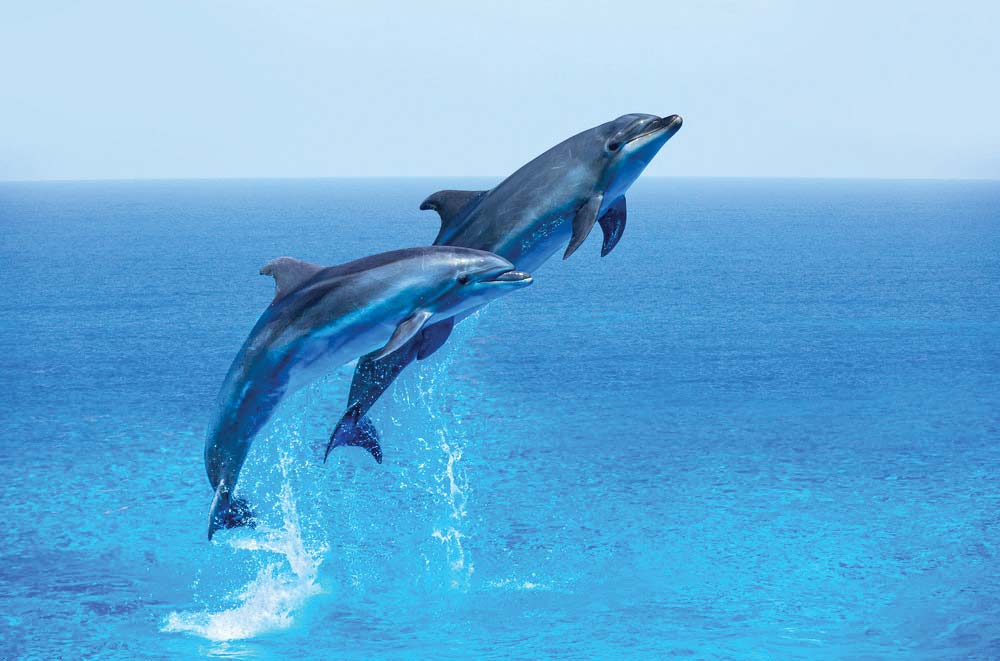NEW DELHI, August 26: Based on the experience gathered during the lockdown under the impact of the Corona pandemic, India, Bangladesh, Nepal and Myanmar have come together to enhance conservation efforts for Asiatic river Dolphins declared as an endangered species. Sharing their experiences during the lockdown, the experts agreed that with less disturbance and human interference, Dolphins can thrive on their own and the necessary atmosphere need to be created for that.
The issue was discussed in a webinar on “Exploring the impact of COVID-19 on the ecosystem health of rivers and its dolphin population: Present status and future strategy for conservation in India-Bangladesh-Myanmar-Nepal” organised by Inland Fisheries Society of India, ICAR – Central Inland Fisheries Research Institute, National Mission for Clean Ganga, Professional Fisheries Graduates Forum (PFGF) and Aquatic Ecosystem Health and Management Society.
The experts agreed that Sunderban delta was a unique ecological space where Gangetic as well as Irrawaddy Dolphin are present, spread over India as well as Bangladesh. The Conference gave a unique opportunity to share experience on the Dolphins. It was also supplemented by Myanmar and Chilika Lake authority in the context of the Irrawaddy Dolphin. The Webinar was attended by more than 1000 participants across the world. Lectures on “Conservative measure of Irrawaddy Dolphin in Myanmar” by Dr. Hla Win, DDG- Fisheries- Retired, Myanmar, “Status of Dolphins in Nepalese Rivers” by Dr Madhav Shrestha, Professor, Aquaculture AFU (Retired), Nepal and “National Atlas and Dolphin action plan- Bangladesh” by Professor Md. A Aziz, Prof Benazir Ahmed, Senior expert from Bangladesh amongst other well-known global scholars were among the speakers at the webinar. The conference resolved to continue this regional and multi-sectoral collaboration in future.
An official spokesman of the union government said, “The rich discussion would be very helpful in developing contours of the ‘Project Dolphin’ in India. River Dolphins a unique species found mainly in rivers of Asia and South America were vanishing rapidly. Gangetic Dolphin, the national aquatic animal of India had been declared endangered by International Union for the Conservation of Nature (IUCN). This webinar was organised to discuss the future strategy to conserve and revive these Dolphins with regional cooperation.”
The webinar started with a welcome address by Dr. B. K. Das, Director, ICAR-CIFRI who gave a brief about the aim and objectives of this webinar. He stated that the webinar would enhance Dolphin Conservation in the South East Asian Regional Countries. Dr. J. K. Jena, DDG (Fisheries Science), ICAR in his address pointed out that the dolphins “do not realise boundaries and have tried to find habitat wherever possible. Hence, regional cooperation is very important in conserving them.” Dr. B. C. Chaudhury, Retd. Principal Scientist, Wildlife institute of India gave a historical overview on the research done on Dolphins so far. Dr. M. Munawar of Aquatic Ecosystem Health and Management Society, Canada conveyed his best wishes.
Rajiv Ranjan Mishra, Director General, National Mission for Clean Ganga (NMCG), shared his experiences on Dolphin Conservation linking its importance in rejuvenation of the Ganga. He said while working on rejuvenation of river Ganga, continuous efforts in the “Namami Gange” programme to bring Dolphin Conservation to national attention resulted in the announcement of “Project Dolphin” by the prime minister Narendra Modi on the lines of the “Project Tiger” which had helped increasing the tiger population in the country. However, he said the most important thing to focus on now would be community participation along with scientific interventions. “Namami Gange” had given importance to biodiversity and ecological improvement along with pollution abatement and projects had been taken up for improvement of fisheries with CIFRI and for biodiversity conservation with Wildlife Institute of India (WII).
Prof. A. P. Sharma, Ex Director ICAR-CIFRI, Barrackpore highlighted the need to research on dolphin habitat restoration and Dr. Dilip Kumar, Former Vice Chancellor, ICAR-CIFE, spoke about the social aspects of fishermen’s life and Dolphins in rural India.
The spokesman said fishery conservation efforts under “Namami Gange” through CIFRI would improve prey base in Dolphin habitat leading to enhanced Dolphin population. Livelihood improvement of fishermen would help them to join conservation efforts. Coordinated approach was needed for synergising trans-boundary efforts and to develop a regional programme. Small habitats in North East Rivers need special study for local propagation or translocation. Dolphin education for students, community engagement and improving overall awareness would be required for the success of the programme. Latest under-water acoustic methodology would have to be applied for Dolphin census, he said.
(Manas Dasgupta)







